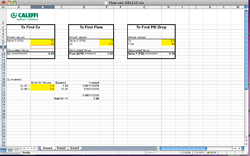Hi, my storage installation last year worked well for half of last winter but one ongoing issue was that I bought a two - 1" taco electronic ball valves which have a 1/2" ball valve guts with 1" connections. I can live with it on one of the services, but the backpressure on the other one is causing some significant "ghost flows" on my circulators. Not a major issue in the winter but its impacting my ability to run storage on low heating demand days.
I liked the concept of the EBZ valves as they draw little power when running but its time to get one with a full size port. Does anyone have any suggestions on a 1" full port electrically actuated valve that has the capability to fail open when the power is turned off?
I liked the concept of the EBZ valves as they draw little power when running but its time to get one with a full size port. Does anyone have any suggestions on a 1" full port electrically actuated valve that has the capability to fail open when the power is turned off?


